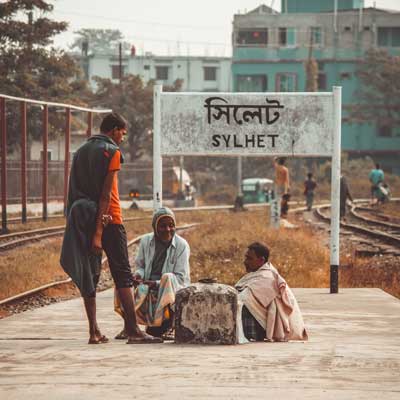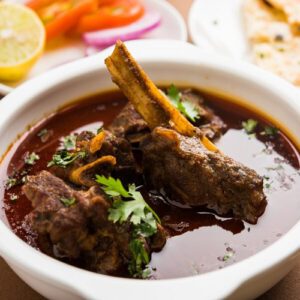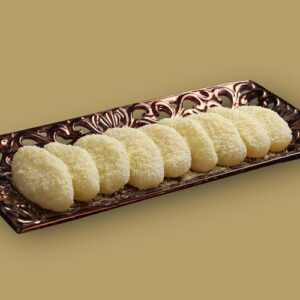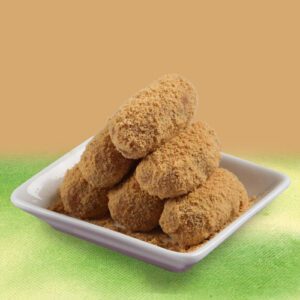Cuisines of Eastern Bengal – Chittagong, Sylhet, and Comilla
Chittagong, Sylhet, and Comilla divisions, collectively referred to as the proposed Eastern Bengal Region of Bangladesh, offer a diverse landscape and a wide variety of culinary preparations. The landscape, characterized by mountains and the sea, significantly influences the lives and food habits of the people in this region.
Despite their proximity, the cuisines of each of these areas are quite different from one another. In the Chittagong Division, for example, highly spiced curries are a common feature. Also Its coastal location results in a cuisine rich in seafood, featuring fish like rupchanda and loita, along with unique delicacies 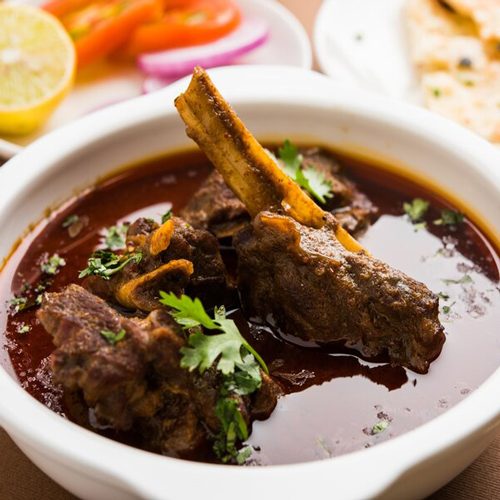 like shutki. The Chittagong Hill Tracts, home to indigenous tribes, have their own cuisine, marked by herbs from the hills and unique cooking methods such as bamboo and banana leaf cooking. The Burmese influence is also evident, with dishes like ‘chow chow,‘ a dessert made with coconut milk.
like shutki. The Chittagong Hill Tracts, home to indigenous tribes, have their own cuisine, marked by herbs from the hills and unique cooking methods such as bamboo and banana leaf cooking. The Burmese influence is also evident, with dishes like ‘chow chow,‘ a dessert made with coconut milk.
Moving to Sylhet, the cuisine here has evolved based on the availability of local plants and animals. It’s mainly indigenous but has incorporated some external influences. One of the most famous foods from Sylhet is Hatkora or Shatkora, a tangy fruit used in various dishes, from beef curry to pickles. Surrounded by small mountains or “tilla’s,” Sylhet is also renowned for its tea.
Comilla Division, situated between Dhaka and Chittagong, reflects a blend of both cuisines but leans more towards central Bangladeshi cuisine. Notably, Comilla is famous for Chomchom or chum chum, a traditional Bengali sweet.
Some of the most renowned dishes you must not miss when visiting the Eastern Bengal Region of Bangladesh include:
Mezban: Mejbani Gosht, also known as Mezban, is a traditional dish dominated by beef, often associated with social prestige and prepared by both the rich and the poor. This dish has a distinct cooking style and requires skill in its preparation. Mezbani features spicy beef cooked with red chilies, a tangy broth made from cow tubular bones known as Nawla kanji, a pulse prepared from peeled and crushed beans, and a slightly pungent dish made from chick-pea pulse, bone, fat, and meat. In the 18th century, Governor Shamsher Gazi of Chittagong organized a feast that substituted fish for beef, as the consumption of beef is forbidden in Hinduism. The Hindu community of Chittagong continues the tradition of Mezbani each year under the banner of “Chittagong Parishad,” creating curries with fish, vegetables, and dried fish.
Durus kura: It is a traditional fried chicken dish in Rohingya and Chittagonian cuisine, featuring a whole skinless chicken cooked in a thick broth. It is a popular delicacy served at weddings and various events in Chittagong and Arakan. This dish, known as kula or kuro, is traditionally presented to guests as a symbol of honor and hospitality. In accordance with the Rohingya culture, the bride’s family prepares durus kura for their new son-in-law, as captured by the saying in the Rohingya language, ‘zamai kota dusara, durus kura musara’. This age-old tradition mandates the offering of two durus kura to the son-in-law, a custom still upheld by Rohingya families who have migrated to foreign countries and now reside far from their Arakan homeland.
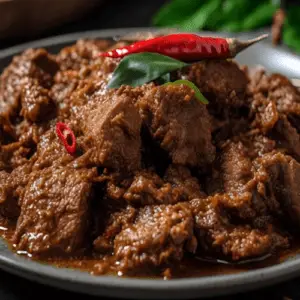 Beef shatkora: Beef shatkora is a popular dish from the Sylhet region of Bangladesh, featuring boneless beef cooked with earthy spices and topped with a fragrant, bitter, and slightly sweet citrus fruit called shatkora (hatkora). The fruit, resembling a lime, is only used for cooking due to its intense bitter taste. The dish is a stunning autumn curry. It pairs well with glutinous rice or boiled white rice and a salad of cucumber, tomatoes, and red onions. It is okay to use either fresh or frozen shatkora and if shatkora is unavailable, grapefruit or pomelo can be used as a substitute.
Beef shatkora: Beef shatkora is a popular dish from the Sylhet region of Bangladesh, featuring boneless beef cooked with earthy spices and topped with a fragrant, bitter, and slightly sweet citrus fruit called shatkora (hatkora). The fruit, resembling a lime, is only used for cooking due to its intense bitter taste. The dish is a stunning autumn curry. It pairs well with glutinous rice or boiled white rice and a salad of cucumber, tomatoes, and red onions. It is okay to use either fresh or frozen shatkora and if shatkora is unavailable, grapefruit or pomelo can be used as a substitute.
Delicacies from the Chittagong Hill Tracts: The Chittagong Hill Tracts, which encompass Khagrachari, Rangamati Hill, and Bandarban Districts in Bangladesh, constitute the country’s primary hilly region. Historically settled by Burmese Arakan tribal refugees in the 16th century, it is now home to the Jumma people, a diverse minority group hailing from the Chittagong Hill Tracts. This group includes the Chakma, Arakanese, Marma, Tripuri, Tanchangya, Chak, Pankho, Mru, Bawm, Lushai, Khyang, and Khumi communities.
Chakma cuisine boasts an array of delectable dishes, such as “hebaang,” which features steamed fish or meat wrapped in leaves, often accompanied by oyster or bamboo shoots. “Pajon,” a popular dish among the hill residents, consists of fresh vegetables. Notably, “hebaang” emphasizes the use of leafy greens in its preparation.
The Marma people enjoy sweet treats like sticky rice adorned with roasted sesame seeds and shredded coconut. A favorite Marma dish is “mungdih,” a flavorful concoction comprising thirteen ingredients, including sliced boiled eggs, lentil fritters, peppercorns, flat leaf coriander, ground chili, and noodles. To prepare it, one mixes the ingredients in a bowl and then pours a broth made from tamarind, ginger, garlic, and onions on top. The result is a delightful and delicious dish. “Nappi” or “sidol” (fermented dried fish paste) is an essential ingredient in many Hill Tracts dishes. Honestly, this short paragraph doesn’t have enough space to talk about all the different kinds of food from the hill areas. I’m going to write more about the subject in a different blog post soon.
Nunor Bora: Nunor Bora is a popular savory rice flour snack freshly prepared in Bangladesh, commonly served alongside meat or chicken curry. These delectable treats are particularly cherished during Eid. To make Nunor Bora, one begins by boiling water and adding a mix of ingredients, including onions, ginger, seasonings, and a combination of rice flour and/or ground rice. The resulting dough is then skillfully rolled and cut into various shapes before being deep-fried in oil until achieving a delightful golden, crispy texture. What makes Nunor Bora even more appealing is their ability to be prepared in advance and conveniently stored in the freezer, ready to be served to unexpected guests. Nunor Bora can be crafted using a combination of plain flour, rice flour, and/or ground rice. Rice flour, finely milled, imparts a smoother texture, while ground rice adds a slightly gritty quality. By adjusting the quantities of these ingredients, one can achieve the desired texture, whether it’s a soft, crunchy, or a delightful blend of both.
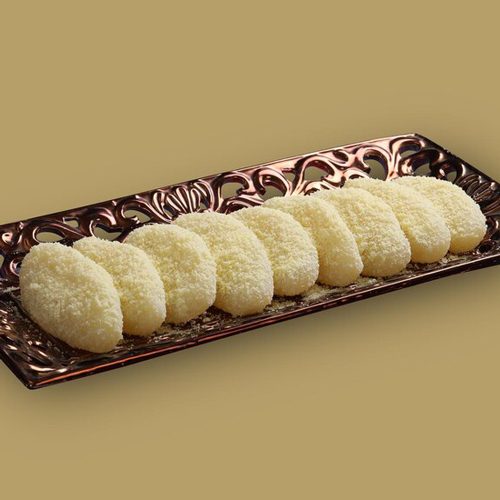 Sweets of Comilla: Comilla, the second-largest city in eastern Bangladesh, is renowned for its popular sweet shops, including the famous Bhagaboti Pora Bhander. These establishments, such as Matri Bhander, Bhagobati Pora Bhander, and Sital Bhander, are known for their unique and delectable sweets. Comilla also offers a variety of other popular sweets, including Porabarir Mishti, Jaljogh, and Jenis sweets.
Sweets of Comilla: Comilla, the second-largest city in eastern Bangladesh, is renowned for its popular sweet shops, including the famous Bhagaboti Pora Bhander. These establishments, such as Matri Bhander, Bhagobati Pora Bhander, and Sital Bhander, are known for their unique and delectable sweets. Comilla also offers a variety of other popular sweets, including Porabarir Mishti, Jaljogh, and Jenis sweets.
Matri Bhander, Bhagobati Pora Bhander, and Sital Bhander have earned a reputation for their Rasmalai and sweet delicacies. However, it’s worth noting that there are counterfeit shops in the Padua Bazaar and the cantonment area along the Dhaka-Comilla highway that employ deceptive tactics to use the name Matri Bhander.
Comilla is also celebrated for its iconic sweets, such as Balish mishti, Monda, and Chomchom. Balish mishti, crafted by Goyanath, is known for its pillow-like shape and substantial size. Monda, a 200-year-old sweet created by Gopal Pal, has gained worldwide popularity. Chomchom, a delightful sweet from the region, holds a special place of distinction. In short, a visit to Comilla is incomplete without savoring and bringing home some of these sweet treats.
These were, without a doubt, some of the must-try cuisine specialties from the Eastern Bengal region. However, there are several more delightful dishes and treats worth mentioning. If you have any recommendations or feel that something significant was missed from this list, please share your suggestions in the comments below. Your insights and additions will be much appreciated!

